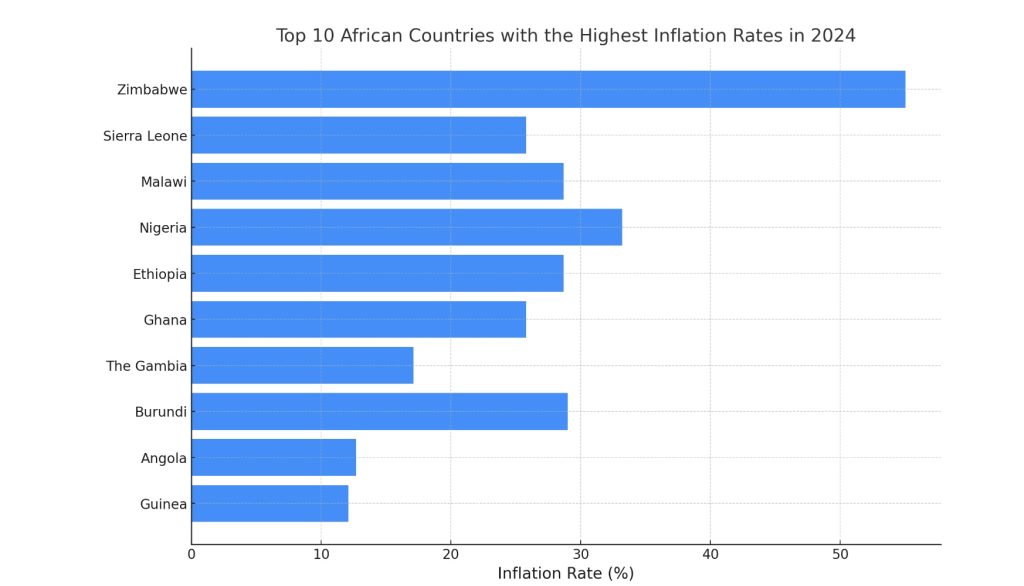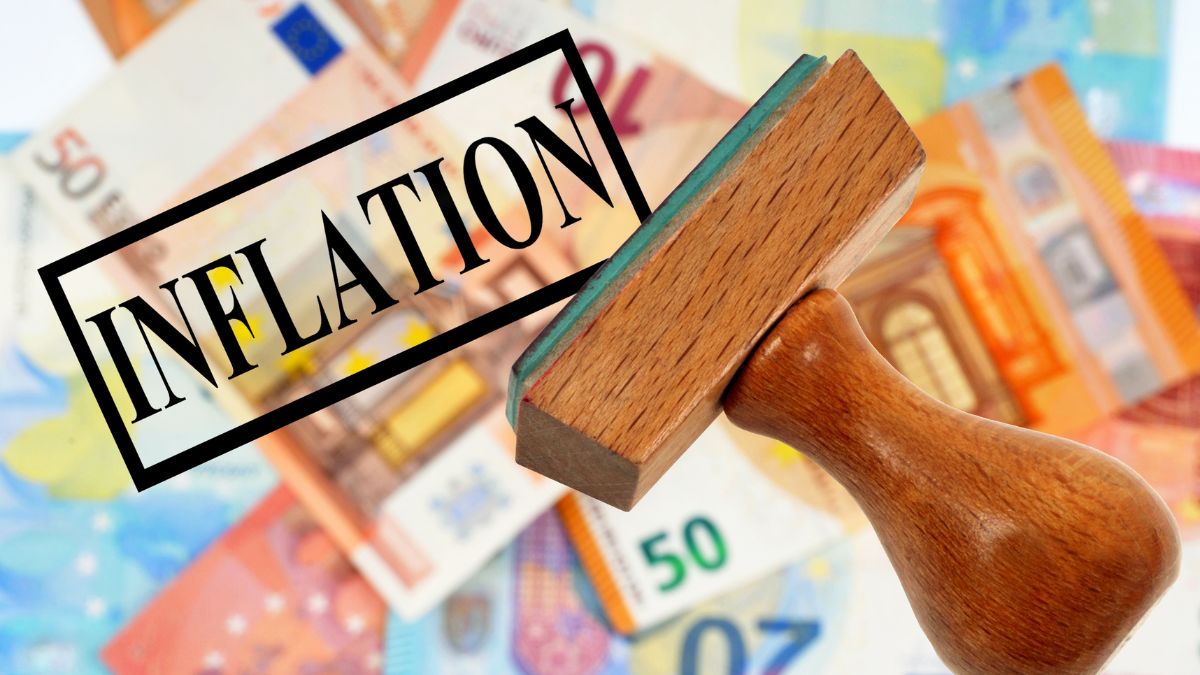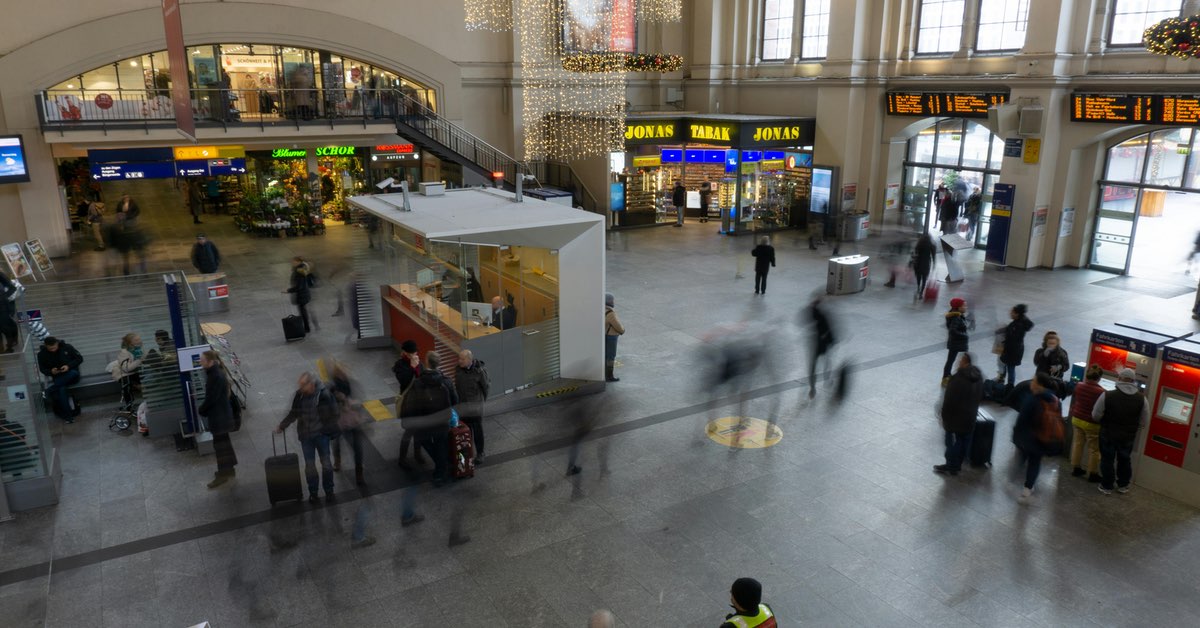Inflation is a common economic term that refers to the general increase in prices of goods and services over time. In simpler terms, your money buys less today than it did yesterday or a year ago. High inflation acts like a silent tax, eroding the purchasing power of citizens. Imagine your salary stays the same, but the cost of groceries, rent, and transportation keeps climbing. This makes it difficult to afford basic needs and reduces your overall standard of living. High inflation can discourage businesses from investing and expanding, hindering economic growth. While a small and steady level of inflation is generally considered healthy for an economy, high inflation can wreak havoc.
In recent years, inflation has posed a major challenge for African economies. Fueled by a surge in commodity prices after the 2020 pandemic and disruptions to global supply chains, inflation rates climbed across the continent. This has had a ripple effect, impacting everything from societal stability to corporate confidence and consumer spending. A recent World Bank report titled “Addressing Inequality to Revitalize Growth and Alleviate Poverty in Africa” indicates a potential turning point. The report projects that inflation will cool across most Sub-Saharan African nations in 2024 compared to the previous year. 90% of Sub-Saharan African countries are projected to experience a decrease in 2024 compared to the previous year.
This positive trend is attributed to factors like the normalization of global supply chains, a gradual decline in commodity prices, and tighter monetary policies implemented by African governments. While some countries are projected to experience a decline in inflation rates in 2024, a significant number continue to grapple with concerning figures. Here’s a closer look at the top 10 African countries with the highest inflation rates and their ongoing battles against this economic challenge.

1. Zimbabwe
Zimbabwe’s annual inflation in March reached 55%, a seven-month high. Zimbabwe has a long history of hyperinflation, with the current situation reaching staggering levels. The country’s struggles stem from a complex web of factors. Years of corruption and inefficient government spending have eroded confidence in the Zimbabwean dollar, leading to its depreciation. Over the years, the Zimbabwean dollar lost significant value against major currencies, making imports more expensive and fueling inflation. Last year, Zimbabwe’s inflation hit 175% as the currency continued crashing against the US dollar. Global supply chain issues have further exacerbated the problem, making essential goods scarce and driving up prices. Recently, Zimbabwe’s central bank launched a new structured currency backed by gold in an attempt to tackle sky-high inflation.
2. Sierra Leone
Several factors drive Sierra Leone’s inflation woes. Ongoing disruptions in global supply chains have impacted Sierra Leone’s dependence on imported food staples, pushing prices higher. According to the World Bank, the import share of food consumption in Sierra Leone is estimated to be around 60%. This high dependence on imported food makes the country vulnerable to global price fluctuations. The depreciation of Sierra Leone’s currency made imports even more expensive.
3. Malawi
Similar to Sierra Leone, Malawi faces rising food import costs due to the war in Ukraine and a depreciating currency. The World Bank estimates that Malawi imports around 30% of its total wheat consumption. This dependence on external sources makes the country vulnerable to global price shocks. The lingering effects of the pandemic also contribute to inflationary pressures. The Reserve Bank of Malawi data shows that the Kwacha depreciated 8% against the US dollar between January 2023 and March 2024. The government has responded with interest rate hikes and social safety nets for vulnerable populations.
4. Nigeria
Nigeria’s headline inflation rate reached 33.2 percent in March 2024. Africa’s most populous nation grapples with a depreciating Naira, rising global oil prices leading to higher domestic fuel costs, and ongoing security challenges disrupting food production and transportation. The Central Bank of Nigeria has raised interest rates to control the money supply and curb inflation. There are also efforts underway to manage foreign exchange reserves and stabilize the Naira.
Related Articles:
5. Ethiopia
The ongoing conflict in northern Ethiopia has had a devastating impact, disrupting agricultural production, depreciating the Birr, and causing supply chain disruptions. In February, inflation in Ethiopia hit 28.7%. Based on a monetary policy statement by the National Bank of Ethiopia, the country, home to nearly 120 million people, has struggled to tackle rising inflation, with an average inflation of 16% per year recorded over the last ten years. Ending the conflict and securing international aid are crucial steps towards economic recovery and stabilizing food prices.
6. Ghana
Last year, Ghana’s inflation rate rose to as high as 43.1%. This was driven by food prices. The government then implemented base-effect comparisons and aggressive monetary policy. As of March 2024, Ghana’s inflation sits at 25.8% year on year, up from 23.2% in the prior month. Ghana’s inflation woes stem from a combination of factors, including a depreciating Cedi due to rising global interest rates and a large budget deficit. The government is aiming to control spending and implement a new electronic transaction levy to raise revenue, but the situation remains challenging. The Bank of Ghana is hopeful that inflation will close the year at between 13% and 17%.
7. The Gambia
The Gambia is an import-dependent nation that is vulnerable to global price fluctuations. The Gambia faces rising import costs due to global inflation and a depreciating Gambian Dalasi. Shortfalls in domestic food production also contribute to rising food prices. The government is focusing on boosting domestic food production and tourism to mitigate the impact on essential goods. In February, Gambia’s inflation rate stood at 9.2%. By March, Gambia’s Inflation Rate reached 17.1%.
8. Burundi
Burundi’s high inflation is driven by a combination of currency depreciation, rising global food prices, and ongoing political instability. The country’s overall inflation rate has been high, averaging 29 percent since last year. The government has limited resources to address the situation with measures to boost agricultural production and stabilize the exchange rate. Inflation has been projected to drop to 9.0 percent in 2024. However, the impact of these policies is yet to be seen.
9. Angola
Angola offers a more positive story. The National Bank of Angola reports inflation at 12.7% in February 2024, a continued decline from December 2023’s 15.3%. While still high, it shows a positive trend compared to previous years. The central bank’s efforts to raise interest rates could be helping to curb inflation. However, Angola is a major oil producer, and rising global oil prices might boost government revenue and allow for investments in price stabilization measures.
10. Guinea
As of March, Guinea’s inflation sits at 12.1%, a slight increase from December 2023’s 11.2%. This is a moderate increase compared to past years, but monitoring if it continues to rise is important. Inflationary pressures from neighboring countries like Ghana could be impacting Guinea through trade and regional integration. Recent political tensions could also be discouraging investment and hindering economic growth.











